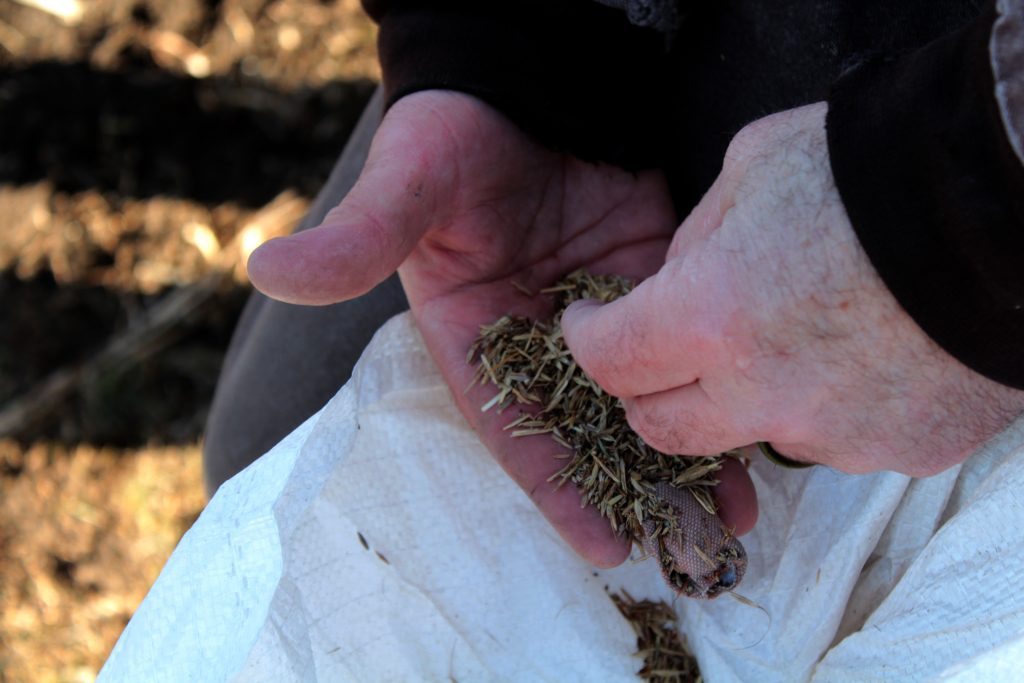Considerations for Enhancing Northeastern Turkey Habitat
Habitat management in the Colonial Forests requires a modified approach for land managers.
Wild turkeys at the northern end of their range in the eastern portion of North America routinely face challenges their southern brethren seldom experience.
Northern winters are tougher, snow is usually deeper, natural foods can be scarce and, in some areas, there are no agricultural crops.
Enhancing turkey habitat in these areas requires special consideration.
Forests in Maine, Vermont and New Hampshire are a mix of northern hardwoods, spruce and fir. This area comprises the northern part of the area the NWTF dubs, “America’s Colonial Forests,” a vast region stretching from Maine to northern Virginia and West Virginia.
“If we get a bad snowstorm, the birds will hang out in the trees until a crust forms on the snow, and they will move around looking for food,” said Matt DiBona, NWTF New England district biologist. “They will stay there a week or two if they need to. Any more than that and it starts to take a toll. Having those patches of conifer trees to roost in is critical to helping turkeys through severe winters.”
DiBona explained that extended snow and cold negatively influence a turkey’s body condition, resulting in death in extreme cases or in hens that are not healthy enough to nest.
Wild turkey habitat in the far Northeast needs to be managed for all four seasons to create good roosting and brooding areas, as well as food sources for the fall and winter. Landowners can create these food sources. DiBona suggests planting a diversity of crabapple and other fruit trees, along with shrubs such as dogwood, winterberry and hazelnut. In addition, landowners with agricultural crops should consider leaving a row or two standing. This can pay larger dividends when food is scarce in the winter.
Fruits and Nuts
Much of the habitat across New England is forested land on abandoned farms from decades ago. This often means old apple trees are still hanging on. Pruning these long-forgotten apple trees is one of the top recommendations NWTF experts make when hosting habitat work days. Of course, new apple trees can be planted, including on public land where permitted.
“We don’t need them to look all neat and pretty like in an orchard,” DiBona said. “We just need them to stay alive and produce food for wildlife.”
Our forests can also provide abundant food sources. Stands of oak and beech are particularly important (think: acorns and beechnuts).
“If your beech mast isn’t good one year, maybe oak will be. It can compensate,” DiBona said.
Most New England forests are mature, typically 80 to 100 years old. Where appropriate, DiBona advises thinning overstocked woods to favor species that are beneficial to wildlife or have other important values. This also opens up the canopy, allowing sunlight to reach the ground to promote the growth of forbs and woody stems that provide important nesting habitat for turkeys. It also helps other wildlife and songbirds.
“Diversity is key,” DiBona said. “Anything you can do to enhance forest structure and species diversity helps wildlife. When it comes to doing forestry work, the messier we can leave it, the better it is for wildlife.”
DiBona said old logging roads and landings are excellent spots to grow grasses and forbs that promote brood-rearing habitat. If planting food plots on these areas, he recommends planting mixes that include a few different species; for example, a mix of clover, alfalfa and chicory. Again, diversity helps compensate when one or more plant species might have bad years due to weather.
In addition to your NWTF regional experts, state wildlife agencies and the USDA Natural Resources Conservation Service can advise private landowners on turkey habitat creation. Discounted prices for seeds are available to members through the NWTF seed programs.
Turkey population health
Unlike some areas of the country, DiBona said turkeys in New England are doing well. He notes that New England was one of the last areas to see turkey restoration.
“It’s difficult to see what the future looks like, but for now, our populations are holding pretty steady overall,” he said.
Still, there have been bumpy seasons. DiBona pointed to 2023 as an example of a bad nesting season because of the exceptionally high amount of precipitation. But, he noted, “The birds are made to weather those storms. That’s why they have such large clutch sizes. They can bounce back from a bad year pretty quickly. We are in good shape so far this year.”
NWTF Seed Subsidy

The NWTF subsidy program allows members to purchase seed and sometimes other products at a reduced cost for habitat plantings. This program is only available to NWTF members, and products are cost shared by the states. For more information: https://www.nwtf.org/membership-giving/nwtf-seed
